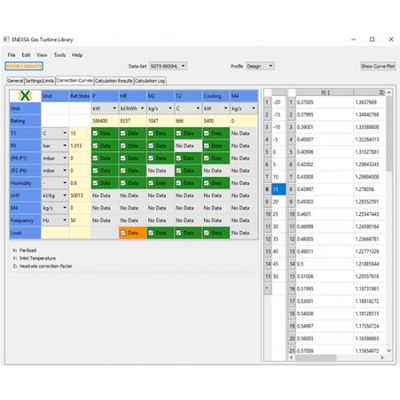

- Home
- Companies
- ENEXSA GmbH
- Software
- ENEXSA - Gas Turbine Library Software

ENEXSA - Gas Turbine Library Software
The ENEXSA Gas Turbine Library is designed for the use within the EBSILON®Professional Component 106 "Gas Turbine (OEM GT)". The ENEXSA Gas Turbine Library covers the full range of industrial applications, from micro gas turbines to large H-class gas turbines. The performance data are supplied and approved by the respective OEM. Data updates are generated as soon as new models and/or performance updates become available.
The performance characteristics of the gas turbine have a large impact on the subsequent HRSG and its steam cycle. Modern high-efficiency gas turbines also integrate with the water-steam cycle for fuel and/or air pre-heating, and in some cases the waste heat from the GT combustor and turbine are re-covered in the HRSG. The EBSILON model of the overall plant enables the user to evaluate these processes over the entire operating range of the plant based on the detailed off-design performance data supplied in the ENEXSA Gas Turbine Library.
The Gas Turbine Library provides correction factors and offsets for power, heat rate, exhaust flow, exhaust temperature. cooling duty and injection flow in correlation to ambient conditions as well as part load operation. Up to 53 correction curves can be included in one data set for a specific GT model. The data are stored in tables that can be accessed in a matrix of correction curves. The user can use the pre-configured and vendor approved curve sets provided by ENEXSA. It is also possible to create a new data set based on project-specific information from scratch or by copying and editing existing data sets.
Depending on the nature of the performance correlation, the correction Curves are one- or two-dimensional. Each Correction Curve can be displayed separately, and individual values of the secondary parameter can be selected or de-selected. The example shown here is a typical curve for heat rate vs. part load fraction, with ambient temperature as the secondary parameter.
